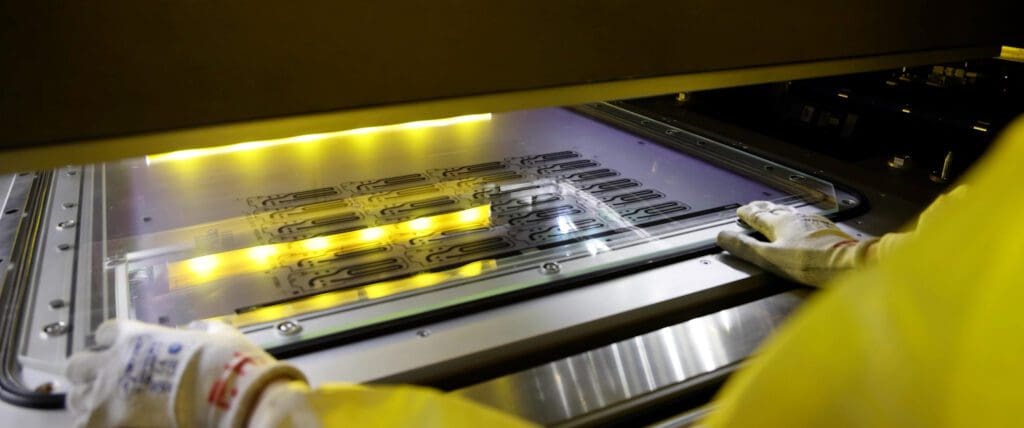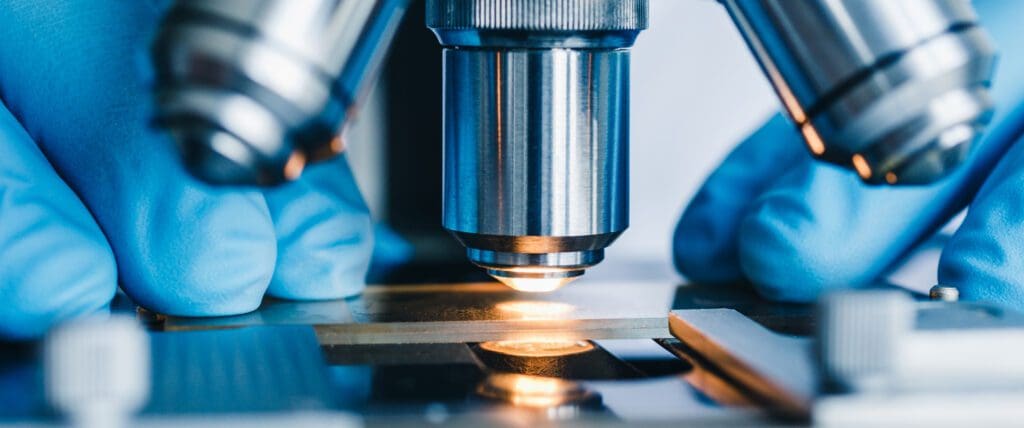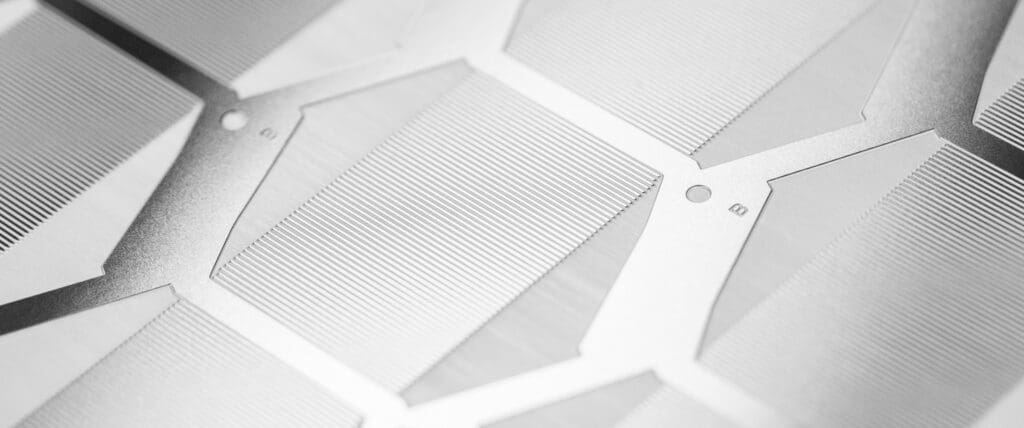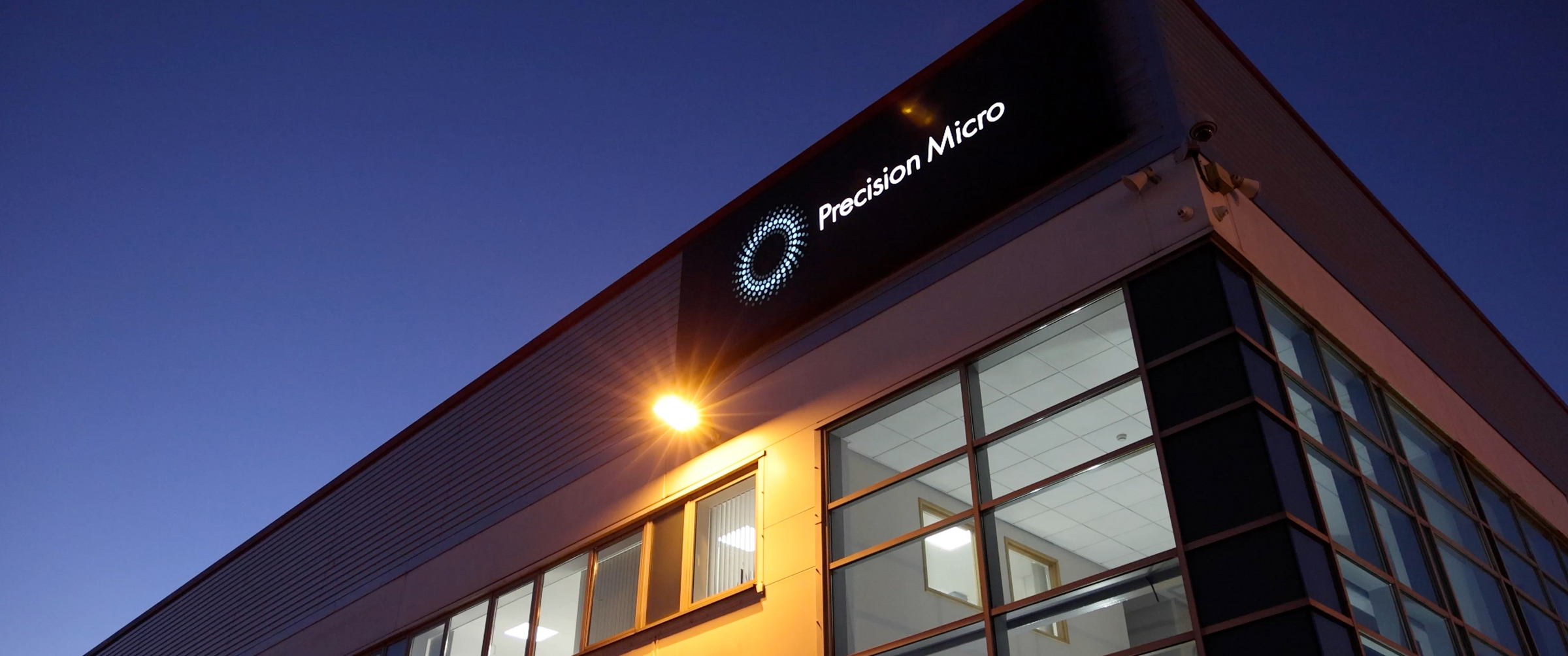Electrochemical etching or photochemical etching: Which process best suits your component needs?
When selecting an etching technique for precision parts, understanding the differences between electrochemical and photochemical etching is crucial. This article compares both processes to help determine when Precision Micro’s photochemical etching service is best suited to your project.
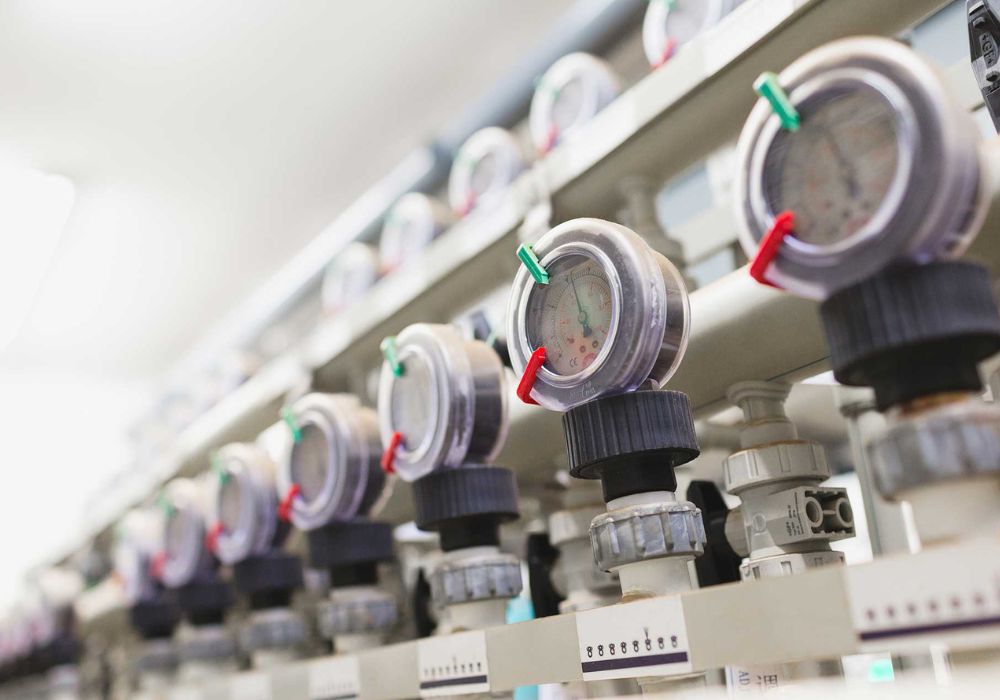
What is electrochemical etching?
Electrochemical etching, also called electrolytic etching, is a metalworking process where a metal piece, covered with a protective resist, is immersed in an electrolyte solution. The metal acts as the cathode, while the resist-covered area serves as the anode. Applying direct current causes ions from the anode to move towards the cathode, etching the exposed metal areas. This process continues until the desired depth is reached, after which the resist is removed to reveal the etched design.
What is photochemical etching?
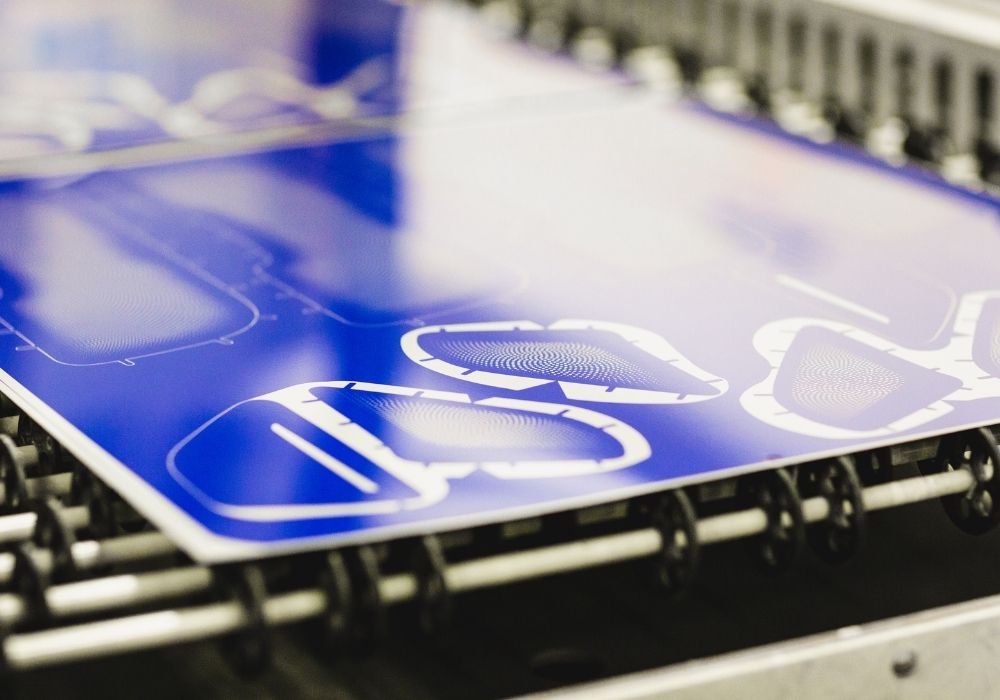
Photochemical etching, also known as photochemical machining or chemical milling, involves applying a photoresist to a metal sheet. The photoresist hardens in the design areas when exposed to UV light. The exposed areas are then selectively removed, allowing the underlying metal to be etched away through a controlled chemical reaction.
Comparing electrochemical and photochemical etching
Both electrochemical and photochemical etching rely on chemical reactions to selectively dissolve metal, eliminating the risk of burrs, stresses, or material distortion commonly found in traditional machining methods. These processes are versatile and can work with a wide range of metals and alloys, whether soft, brittle, or hard, without compromising material integrity. As a result, both techniques are highly effective for producing high-quality precision metal components.
However, while these two processes share similarities, they differ in several key aspects.
Scalability
Electrochemical etching is commonly used for small-scale production of specialist components or prototypes, jewellery, decorative items, and marking parts with logos or identification numbers. In contrast, Precision Micro’s photochemical etching is designed for large-scale production of precise metal components but can also handle smaller-scale projects.
Component features
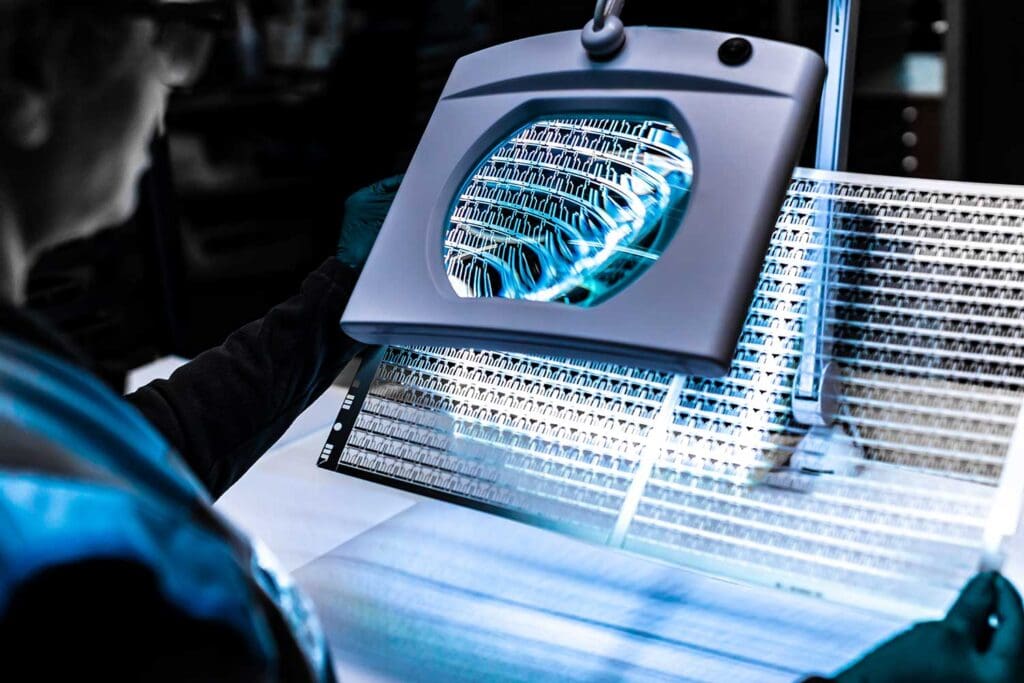
Photochemical etching is ideal for creating thin 2D components from flat sheet metals up to 2.5mm thick, with etched features typically requiring a minimum 1:1 aspect ratio. In contrast, electrochemical etching is suitable for flat, curved, or fully 3D surfaces, offering the ability to produce components with deeper features and thin walls.
Cost
Electrochemical etching is generally more cost-effective for small quantities of specialist components, depending on design and complexity. Photochemical etching is better suited for the serial machining of complex parts with a wide array of features.
Component size
Photochemical etching is suitable for machining parts up to 600mm x 1500mm due to its industrial machinery. Electrochemical etching is best suited for smaller-scale components.
Lead times
Without the need for costly and time-consuming hard tooling, both processes can offer lead times as short as 24 hours.
Conclusion
Choosing the right etching technique depends on your project’s specific needs. Electrochemical etching is cost-effective for small-scale, part marking, and decorative applications, while photochemical etching offers superior precision and scalability for larger and more complex components. Precision Micro’s photochemical etching is particularly well-suited for projects requiring high accuracy, repeatability, and quality assurance.
Ready to discuss your component design? Contact us today.
Chemical Etching Whitepaper
Learn how chemical etching can overcome the limitations of traditional sheet metal machining technologies.
Download